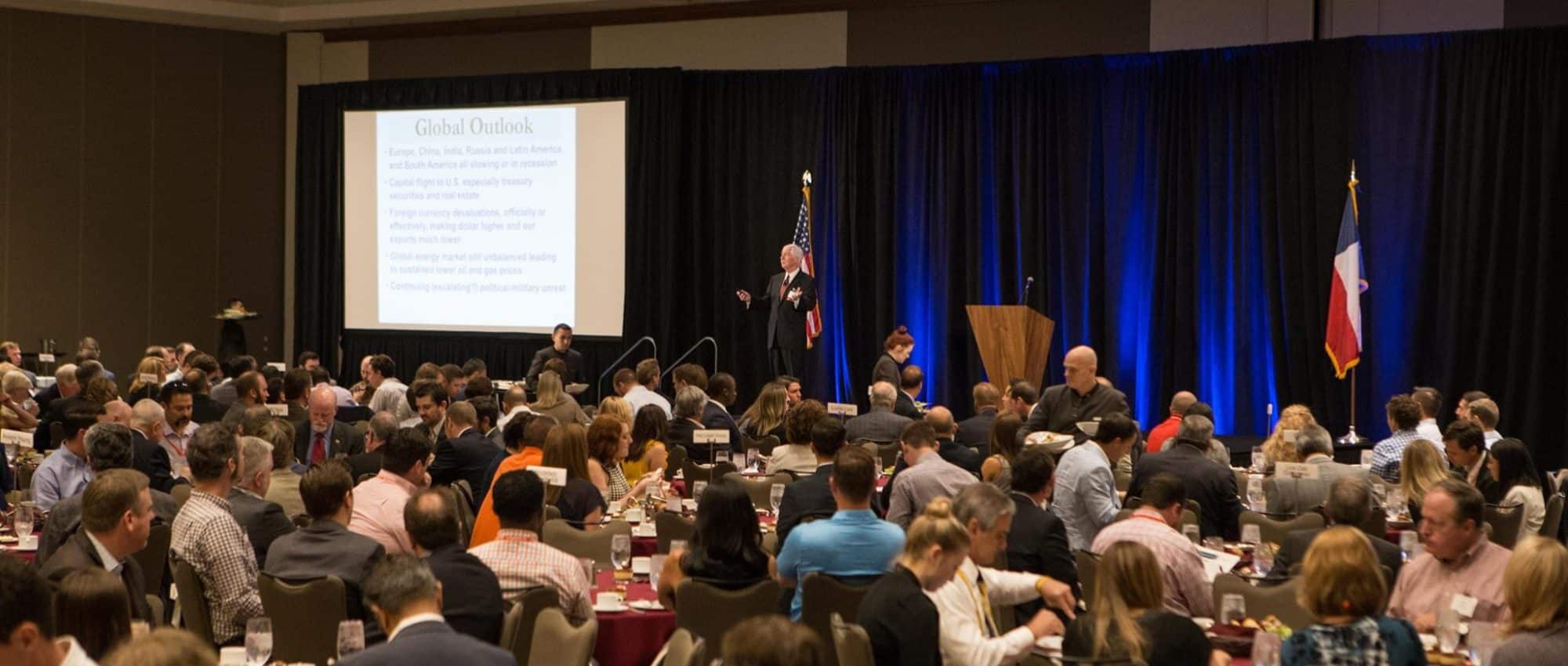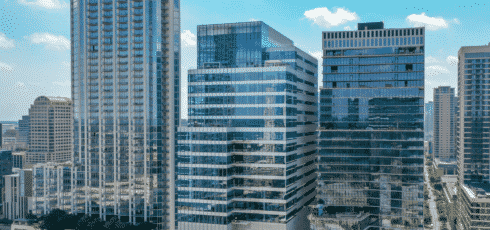Earlier this month hundreds of real estate professionals gathered at the JW Marriott in downtown Austin to chat about the goings on in the local (and global) real estate market at the annual RECA Exchange.
With speakers Mayor Steve Adler and Transportation Futurist, Garry Golden as well as a lunch keynote address by Economist Dr. James Gaines, topics ranged from policy issues to self-driving cars and global economics – with six topical breakout sessions in between. No matter where you were in the conference, one question rang prominent: will the Austin real estate market ever slow down?
After listening to the some of the smartest people in the industry talk about the topic for four hours, I am confident I can answer that question in just a few words: I don’t know. But no one else seems to either.
I can also answer it in a lot more than one word. For my three key takeaways from the event, keep on reading.
1. Austin Isn’t Just a Fad
We’ve all heard that there are over 100 people are moving to Austin each day. That number was exactly 110 in 2014. Now it’s over 150. Today, there are more than 2 million people living in the region. We are on pace to create the most amount of jobs ever in one year, with 27,000 created in the first half of 2016. Leisure and hospitality have added the most jobs this year, with construction being the fastest growing segment of jobs.
In 2015, Austin saw the most multifamily units delivered in a single year at 10 thousand units. We are on pace to break that record again with 15,000 units currently under construction – 13,000 of which are set to deliver by year’s end. All this is happening with a current overall vacancy rate of 4%.
The condo market is healthy due to a growing mix of owners: young professions, empty-nesters, baby-boomers, foreign commercial real estate investors, and wealthy Longhorns from across the world. These groups are all vying to stake a claim to their own little pieces of downtown Austin, whether to live, invest in commercial real estate, or come stay for a few weekends a year during home football games.
The Austin retail market has had the lowest vacancy rate in Texas for nearly ten straight years – currently at 4%.
Austin office projects have recently started breaking ground at about 12% preleased and end up delivering 80%-90% preleased. Two main office projects currently under construction set to deliver in 2017, 500 W 2nd and Domain 8, are experiencing strong activity and will most likely deliver closer to 100% preleased.
The primary drivers of office growth are expansions and organic growth, plus some relocations from other markets. Speakers said the areas set to experience the next wave of office activity in the next five years are Austin’s Eastside, Southwest Parkway and Round Rock.
With statistics like these, it is evident that the buzz surrounding Austin is well-warranted, and people from around the world are taking notice.
2. Austin Isn’t Getting Any Cheaper
To rent a Class A office space in downtown Austin, after operating expenses and parking, it could run you north of $60/sf. This is on par with markets like Chicago. And landlords aren’t budging too much on concessions – you still might have to come out of pocket to build out a white box the way you want.
Many office tenants are experiencing sticker-shock as they go to renew their leases they signed five years ago – even in the suburban markets.
The average apartment rent is $1.39/sf per month.
Units at one of downtown’s newest office condos currently under construction, the Austin Proper, are selling at an average of $900/sf.
The median Austin home price is $292,000, up 8% from June 2015. Over 65% of Austin homes fall in the $200,000 to $499,999 range.
Median home prices are up 37% since 2010, while total real wages are up 39% over the same time.
Despite these high prices, Austin is still seen as a bargain compared to other major markets in the country to do business, what with the talented pool of employees and still low cost of living relative to other cities around the country. Perhaps the increase in costs is just Austin finally catching up to the other major markets?
3. Traffic Still Stinks
No surprise here, but it’s always worth mentioning. It took me nearly thirty minutes to get to the JW Marriott from my apartment less than seven miles away in Southwest Austin. But the best alternative would have been to take a Capital Metro bus, which would have taken twice as much time. There’s no wonder we had a transportation futurist speak to us all over breakfast.
In his opening address, Mayor Adler acknowledged the problem, stating that they are no longer shelving traffic studies – there are wheels in motion to do something about the issue. He said that it is imperative that we get that we get CodeNEXT right and the city gets support for the proposed $720 million mobility bond.
With the core of Austin growing upward, the more affordable areas are growing outward. The theory that if we don’t fix the traffic problem people will stop moving here has proven to be false, so new modes of getting Austinites around to experience all the wonders of the city they moved to is imperative to establishing Austin as a major player in the real estate world.











